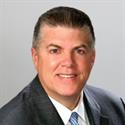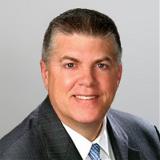Several provisions of 2022’s SECURE 2.0 Act kick in this year--bringing key changes intended to expand workers’ savings and incentivize employers to provide benefits.
Required Minimum Distribution Age Raised on Sliding Scale
The SECURE Act of 2019 increased the required minimum distribution (RMD) age from 70½ to 72. SECURE 2.0 allows RMDs to be delayed even longer, until age 73. Thereafter, the required start date for distributions will move to age 75 in 2033. For those who have already started taking their RMDs, there is no provision to delay them under the bill.
Additionally, under current law, failure to comply with RMD requirements results in an excise tax equal to 50% of the year’s required distribution amount. SECURE 2.0 decreases the penalty to 25%, or 10% if the individual promptly corrects the failure to take a timely RMD.
Catch-up Contribution Limits Increased
Catch-up contributions allow those age 50 and older to set aside additional dollars over the standard maximum contributions to workplace retirement plans such as 401(k)s as well as IRAs.
The limit for catch-up contributions on most workplace plans is $7,500 (a limit of $3,000 applies to SIMPLE plans). This year, these catch-up contributions increase to an amount which will be the greater of $10,000 or 150% of the regular catch-up limit applicable for those who have attained ages 60 through 63. Starting in 2026, the catch-up amount will also be indexed for inflation.
Another important change in 2024 is that all catch-up contributions are required to be contributed to a Roth account in most workplace plans (in effect all plans under 401(a), 403(b), and 457(b)). That means contributions will occur on an after-tax basis, so they would not reduce current income for participants. However, all distributions attributable to these catchup contributions potentially qualify for tax-free withdrawals (if holding period requirements are met). There is an exception for employees earning less than $145,000. The IRS announced this provision would not have to be implemented until after December 31, 2025, to allow companies time to comply with the Secure 2.0 provisions.
Catch-up contribution for IRAs, which currently is $1,000 for those 50 and older, is indexed for inflation.
Matching Contributions Extended for Student Loan Payments
Often, younger workers carrying student debt must make a choice between paying down their student debt or contributing to a retirement plan. With the new changes, employers are allowed to make contributions on behalf of employees who are not contributing to the plan if that employee is making qualified student loan payments.
Matching contributions are voluntary, so it is up to the plan to adopt this provision. Companies may consider adopting this benefit as a means of attracting and retaining employees.
Roth Account Rules Expanded
For 2024, SECURE 2.0 allows tax- and penalty-free rollovers from 529 plans to Roth IRAs, with some limitations:
- Beneficiaries of 529 plans are allowed to roll over no more than $35,000.
- Funds can only be moved if they are in their same name (cannot transfer an account to someone else’s name).
- The 529 plan must be opened for at least 15 years.
- Rollovers are subject to Roth IRA contribution limits.
Under the previous law, those with Roth IRAs are exempt from taking RMDs, but the same is not true of Roth 401(k) plans. The Act currently eliminates required distributions from Roth 401(k)s.
Employers now have the option to allow employees to elect to have matching contributions in a Roth account versus the pre-tax account.
Lastly, under the previous law, SEP and SIMPLE plans cannot have a designated Roth IRA account. However, participants of these plans can now have Roth accounts.
Qualified Charitable Distribution Limit
The current limit when making a qualified charitable distribution (QCD) is $100,000 per person if the person is over age 70½. The QCD allows a direct contribution from a taxpayer’s IRA with the benefit of avoiding income recognition on the donated amount. The limit for QCDs are now indexed for inflation.
In addition, SECURE 2.0 also permits one-time gifts of $50,000 to either a charitable trust or gift annuity plan.
Uniform 401(K) Rollover Rules
The Act provides the Secretary of the Treasury with the authority to standardize and modernize the direct rollover process by creating sample forms to use. While not expected to be completed until 2025, it should make it easier on both employers and employees when moving 401(k) funds.
Small Incentives for Contributing
Previously employers could provide matching contributions as a long-term incentive to contribute to a 401(k) plan. The Act now provides that a company can offer some de-minimus financial incentives—like gift cards in small amounts that are not paid with plan assets—to boost employee participation.
Penalty-Free Early Withdrawals
The previous version of the SECURE Act waived the 10% penalty for early withdrawals from a workplace savings plan to meet birth or adoption expenses, provided those expenses are repaid to the plan. However, it did not put a timeline on when repayment had to occur. SECURE 2.0 puts a limit of three years to repay the distribution, generally effective for distributions made after the date of enactment.
SECURE 2.0 also created a new early withdrawal, for the lesser of $10,000 or 50% of the participant’s account if a participant experienced domestic abuse:
- Distributions are free from penalties.
- Distributions are free from the 10% early withdrawal tax.
- Participant can repay the withdrawn funds over three years, and if done so, will be refunded for income taxes on the money that was repaid.
Also now, participants may have access to penalty-free withdrawals for emergency expenses:
- Limited to one per year of up to $1,000.
- Three years are given to repay the distribution.
- No further emergency distributions allowed during the repayment period unless repaid in full.
SECURE 2.0 set out permanent rules for using retirement funds in the event of a federally declared disaster occurring on or after January 26, 2021:
- Allows participants to withdraw up to $22,000 from employee plans or IRAs.
- Withdrawals are not subject to the 10% early withdrawal penalty and can be taken into gross income over a three-year period.
- Distributions can also be repaid to a tax-preferred retirement account.
The Act also provides a penalty exception for distributions made to a terminally ill individual. This provision will be effective for distributions made after the date of enactment.
Auto Enrollment in 401(K) Plans
Employers previously had an option to initiate “automatic enrollment” of employees into a company-sponsored retirement plan, which means employees automatically participate in the plan unless they choose not to.
SECURE 2.0 now requires employers to provide automatic enrollment and automatic increase features to newly established 401(k) and 403(b) plans. The initial automatic enrollment amount is at least 3% but not more than 10%. Thereafter, the amounts are increased 1% per year until they reach at least 10%, but not more than 15%. All current plans would be grandfathered, and in every case the employee may opt out of the automatic enrollment.
Modification of Credits for Small Employer Pension Start-up Costs
Previously, the three-year small business start-up credit was 50% of administrative costs, up to an annual cap of $5,000. Under SECURE 2.0, the start-up credit increased to 100% for employers with up to 50 employees.
Except in the case of defined benefit plans, an additional credit is also provided:
- Generally, will be a percentage of the amount contributed by the employer on behalf of employees, up to a peremployee cap of $1,000.
- Limited to employers with 50 or fewer employees and phased out for employers with between 51 and 100 employees.
- Applicable percentage is 100% in the first and second years, 75% in the third year, 50% in the fourth year, 25% in the fifth year, and no credit for tax years thereafter.
Whenever there are significant changes to legislation, you should consider consulting a tax professional or your Financial Advisor to help ensure you are taking advantage of all the opportunities available to enhance your financial plan.
Working With Janney
Depending on your financial needs and personal preferences, you may opt to engage in a brokerage relationship, an advisory relationship or a combination of both. Each time you open an account, we will make recommendations on which type of relationship is in your best interest based on the information you provide when you complete or update your client profile.
When you engage in an advisory relationship, you will pay an asset-based fee which encompasses, among other things, a defined investment strategy, ongoing monitoring, and performance reporting. Your Financial Advisor will serve in a fiduciary capacity for your advisory accounts.
For more information about Janney, please see Janney’s Relationship Summary (Form CRS) on www.janney.com/crs which details all material facts about the scope and terms of our relationship with you and any potential conflicts of interest.
By establishing a relationship with us, we can build a tailored financial plan and make recommendations about solutions that are aligned with your best interest and unique needs, goals, and preferences.
Contact us today to discuss how we can put a plan in place designed to help you reach your financial goals.
For provisions of SECURE Act 2.0 for retirement plan sponsors, click here.
PLEASE NOTE: This is not a complete analysis. The provisions discussed in this material are complex and nuanced. Janney does not provide tax or legal advice and it is very important that independent professional advice is sought prior to entering a transaction.
Janney Montgomery Scott LLC, its affiliates, and its employees are not in the business of providing tax, regulatory, accounting, or legal advice. These materials and any tax-related statements are not intended or written to be used, and cannot be used or relied upon, by any taxpayer for the purpose of avoiding tax penalties. Any such taxpayer should seek advice based on the taxpayer’s particular circumstances from an independent tax advisor.
About the author

Related Articles
-
Philanthropic Giving
Tax-Smart Charitable Gifting Strategies
Take advantage of the current tax rules to support the charities you care about and save on your ... -
Tax Planning
3 Tax-Planning Considerations Ahead of Next Year's TCJA Sunset
The Tax Cuts and Jobs Act of 2017 is scheduled to sunset at the end of 2025, meaning significant ... -
Insurance & Annuities
Reposition Assets for Tax-Efficient Wealth Transfer
If you’re close to or in retirement and asking yourself how you can best pass your wealth on to y...




